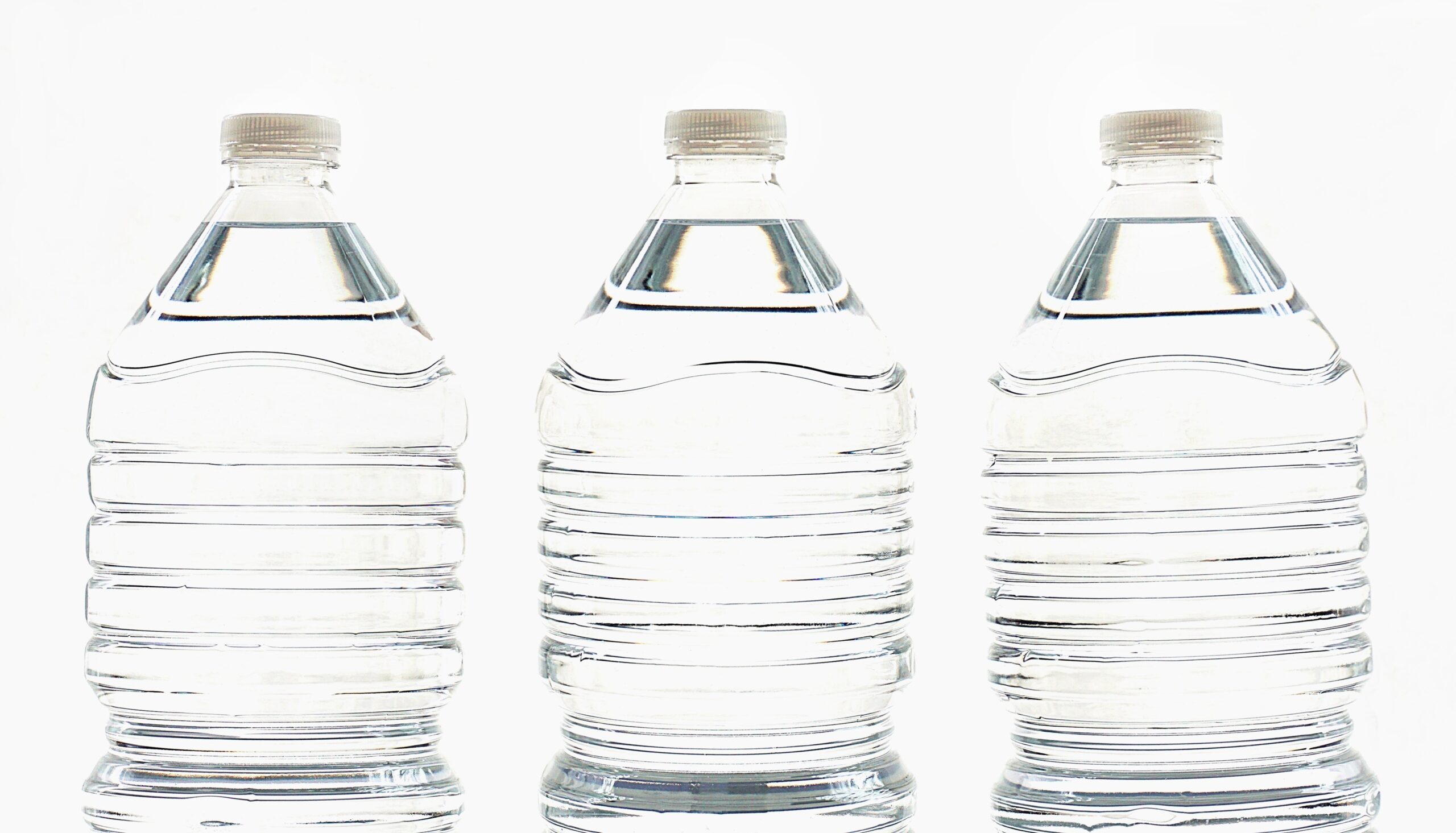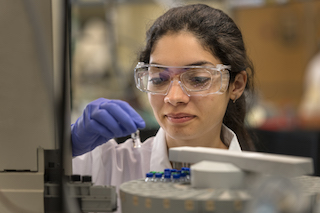3/12
Plant-Based Leaders | Virent, Inc.

Innovative Company Recreates Petrochemicals & Fuels with Sustainable Plant-Based Biomass

President & General Counsel
of Virent, Inc.
Today’s global economy relies on hydrocarbons in the form of natural gas and oil. Those resources began as organic matter – decaying plants and animals, subjected to intense geological pressure over millions of years.
Now, in an effort to reduce our reliance on oil and natural gas, that geological process has been reimagined and recreated by Virent scientists, who have substituted sustainable biomass for ancient organic matter, creating a new source of green chemicals and biofuels.
Yet at the molecular level, these new and renewable products are identical to their petroleum-derived counterparts. That means Virent’s materials are “drop-ins” – they can be used in the current manufacturing and energy infrastructure and production plants without changes to existing supply chains.
A Simple Explanation for a Complex Process

Our primary byproduct is water, rather than the carbon and methane pollutants produced by extracting and processing oil and natural gas.
Ralph Lerner explained the process from their Madison, Wisconsin facility. He serves as Senior Vice President of Commercial Development at Virent.

“Fossil fuels are comprised of carbon and hydrogen. Meanwhile, renewable feedstocks are made up of carbon, hydrogen, and oxygen. To create renewable hydrocarbons, you need to remove that oxygen. That’s what our technology achieves,” said Ralph.
Dave Kettner, President of Virent, added, “And while oil and natural gas are created over geological time frames, ours process is done rapidly. Better still, our primary byproduct is water, rather than the carbon and methane pollutants produced by extracting and processing oil and natural gas.”
That result? Dramatically lower carbon footprints for companies choosing Virent’s plant-based green fuels and chemicals.
From Plant-Based Bio Polyesters to Sportswear, Clothing and Beverage Bottles

We’ve spoken to numerous companies interested in biopolyesters. Many want to make more sustainable products, others are working to reduce greenhouse gas emissions. Our products help companies achieve both.
“Polyester is one of the biggest and fastest-growing material sectors – used in clothing, textiles, plastic films and packaging, and plastic bottles, among many other things,” explained Ralph.
Polyester today is made from a petroleum-based precursor chemical known as paraxylene.
Virent has created an alternative source of paraxylene, made from sustainable agricultural feedstocks and, once commercially available, lignocellulosic materials from wood waste and the stalks of corn, sugar cane and other materials. Because it is the same molecule, albeit biobased, Virent’s renewable version can be seamlessly substituted for its petroleum-based counterpart to make biopolyesters.
Manufacturers of all types are taking notice.
“We’ve spoken to numerous companies in many different end use areas that are interested in biopolyesters. Many want to make more sustainable products, others are working to reduce greenhouse gas emissions,” said Ralph. “Our products help companies achieve both.”
Virent believes it can help achieve those goals. A Life Cycle Analysis study conducted with a third party found a greater-than 50% reduction in the CO2 footprint of Virent’s bio-based paraxylene when compared to its petroleum-based counterpart.

These plant-based bottles are completely recyclable through existing waste management systems.
PET is the acronym for the materials that make common petroleum-based plastic bottles. In 2015, in partnership with Coca-Cola, Virent created the world’s first demonstration-scale production of a plastic bottle made entirely from plant-based paraxylene. The sustainable chemical was dropped into an existing PET production process, spotlighting just how easy such a transition could be, according to the Virent team.
“And these plant-based bottles are completely recyclable through existing waste management systems,” added Ralph.
Essential Feedstock & Product Flexibility

To make our green chemicals, our technology can use carbohydrates from corn, beets, sugar cane, corn stover, ag waste, and multiple types of woody biomass, including pine, ash, and others.
Perhaps most impressively, Virent has a growing portfolio of green chemicals.
Hard plastics used in applications such as electronics, laptops, motorcycle helmets, and safety goggles, for example also start with chemical raw materials that include benzene.
“Benzene is another petrochemical we’ve re-created from plant feedstocks. It’s commonly converted into advanced engineered plastics, detergents, packaging materials, and various other applications,” noted Ralph.
“Another interesting market is construction materials – think about petroleum-based products like ABS and polycarbonate, for applications including plastic pipes and building windows as examples. These products currently use benzene as one of the raw materials and could also ultimately be based on plant-based chemicals,” noted Dave.
“When made from Virent’s renewable, plant-based chemicals, these long-lasting products actually become carbon sinks. After all, they are made from atmospheric carbon removed from the environment during photosynthesis,” explains Dave.

“We can also make plant-based toluene, which has solvent applications, or which can be a building block for other specialty chemicals,” Ralph notes.
The mix of scientific names may not mean much to non-chemistry majors, but the technology’s flexibility is the important takeaway.
“A single commercial plant will be able to make all three green compounds from a wide diversity of feedstocks,” said Dave. “To make our green chemicals, our technology can use carbohydrates from corn, beets, sugar cane, corn stover, ag waste, and multiple types of woody biomass, including pine, ash, and others. For a commercial scale plant, we are focused on feedstocks that are commercially available today, while looking towards cellulosic feedstocks when they are available.”
The US today has the world’s most efficient agricultural sector that meets US demand and also exports products around the world. Agricultural productivity is continuing to increase and companies like Virent are providing new market and growth opportunities to US agricultural producers.
Consumer Demand Drives Sustainability

Of course, the Virent name won’t appear to consumers on store shelves. The company sits near the beginning of the manufacturing process, with plans to work with companies in the chemical industry to develop its plant-based chemicals and establish a supply chain.
But the consumer market is key.
“Getting consumers and the consumer brand companies invested in sustainability issues is essential to creating a healthy market for renewable products,” said Dave. “As more consumers speak up – calling for responsible corporate action and better products – we see interest at companies growing.”
“Right now, our marketing focus is on working with brands and end users to convey the potential of bio-based materials and also to produce demonstration products. It’s a chance to show them that we have the technology. And consumer-facing brands have been quite interested,” said Ralph.
Virent is actively working on the scale-up and commercialization of its technology. Longer term, the company also has plans for licensing the technology so that others can help make a positive difference towards a more sustainable environment.
“We’re actively pursuing all avenues,” said Dave.
Government’s Role

“Our industry is five or ten years old and we’re scaling up a whole new industry from scratch,” explained Dave. “Of course, we’re simultaneously competing with oil and petrochemicals – sectors that have decades of investment and optimization.”
The first refineries were built over 100 years ago, and petrochemicals date back to the 1930s.
“Bio-based products are increasingly competitive on price, but it’s tough to beat someone with a century-long head start. And that’s where government policy and tax incentives could really help,” he said.
More on the Science

Virent is one of the few that design green chemicals with catalysts instead of microorganisms.
Virent is not the only company making green chemicals. But they’re one of the few that design these essential building blocks with catalysts instead of microorganisms.
Catalysts are inanimate. Microbes are, of course, living creatures.
“Scientists have engineered yeasts and other microorganisms to eat the sugar from biomass feedstocks and then excrete the chemical compound of interest. That is how ethanol is commonly manufactured,” explains Dave. “But as living creatures, the microorganisms also need to grow and replicate, and so they consume some of the sugars for that purpose, reducing the yield of the final product.”
Most microorganisms eat only one or a couple types of sugar. They can be sensitive creatures, too — to temperature, contamination, and competition.

“Our catalysts don’t care about any of those issues and don’t consume a drop for other purposes, so they don’t reduce yield,” added Dave. “They conduct their proscribed chemical reactions and are ready to go another round. Better still, we’ve designed our catalysts to work with all types of sugars and other secondary compounds, which provides us feedstock flexibility so that we can co-locate our production facilities near feedstock inputs from nearly every part of the U.S. and around the world.”
Join our growing group of plant-based leaders working toward a more sustainable economy. Learn more about the benefits of PBPC membership.
